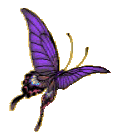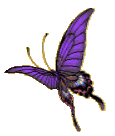
|  |  |

|  |  |
Herman Asenap Interview: #9041 Field Worker: R. B. Thomas Date: October 30, 1937 Name: Herman Asenap Residence: Indiahoma, Oklahoma Date of birth: 1877 Place of Birth: Western Oklahoma Father: Mother: "The Comanche and Kiowas were allies and Father was a friend and warring partner of Chief Quanah Parker; he was in the battle of Adobe Walls with him and he was in several battles in the early '70s. He was a fine marksman with a bow and arrow, he was also a fine horseman and killed several hundred buffaloes. The Indians dried the meat, made clothing and shelter out of the hides, used the bones to make tools out of and the horns to make decorations. Father killed lots of deer, the Comanche Indians were great hunters and knew the art of tanning hides. They made ropes out of buckskin and decorated them with elk's teeth. The one who had the most decorations was the best and recognized as the wealthiest. While Father was a great warrior and fine marksman he was not savage; he was very kind and considerate, was a devout Christian and did a lot of good among the old Indians to get them to see the Jesus Road as they called it. Herman Lehmann was captured by the Comanches when he was nine years old and was raised by them; he lived with Father a long time and thought a great deal of him, he treated him as a father. The Comanches would tie Herman on a pony and turn the pony loose and watch it buck the white captive tied to its back. They would also tie Herman with a ten foot rope to a tall sapling, bend it over as far as they could and let it flip back, thereby throwing Lehmann up in the air while attached to the rope. Father would laugh and joke with Herman after he became more civilized. The Comanches were a very wild tribe and were hard to subdue. They hated the white man because they killed all the buffalo, thereby depriving the Indians of their principal source of food supply. They made a vow to fight the whites and kill as many as possible, this being one cause of the Adobe Walls battle. The hunters had a storehouse and Major Bent had a trading store and furnished hunters ammunition. The Plains Indians decided to wipe them out so they organized a war party and rode to the camp about eight hundred strong, Kiowas, Comanches, Cheyennes, Arapahoes and a few other of scattered tribes. They were not many hunters and they expected to catch them asleep and murder them but the tent pole broke before the Indians arrived and the hunters were not asleep, perhaps this saved their lives. The Indians surrounded the fort and Billy Dixon and others poured the shot into them and killed several horses and wounded and killed several Indians. The battle kept up several days and only two white men were killed but over one hundred Indians were killed or wounded, Quanah Parker was wounded in the back of the head. Father attended the Medicine Lodge Treaty, was a friend of Ten Bears, Comanche Chief, and Apeatone, Kiowa Chief, who was sent to Nevada in 1890 to investigate the Ghost Dance and came back and reported it a fraud. He went on raids in Texas with the Comanches and captured several white captives among them the Smith boys, Herman Lehmann and others. In 1904 a payment of $100.00 was to be made at Fort Sill to all Comanches. Mr. Harris, owner of the Red Store on Cache Creek, and his clerk, A. A. Mitchell, and nearly all the Comanches went to Fort Sill and Father was old and did not go; he was the only Indian on the reservation and R. B. Thomas was the only white man on the reservation at Cache Creek. It was in February and snow was on the ground. Thomas was clerking in the store and boarding with Mrs. Harris near the store; she was the only woman there. Father could not talk English and at that time Thomas could not talk the Comanche language. Thomas tried to teach Father the English language but he was too old to catch it. The comanche language is a manufactured language and had never been in print yet. These are a few Comanche words: Nam I Yi ~ Baking powder Napp ~ Shoes Pe ~ Nah ~ Sugar Wananap ~ Calico Obopit ~ Oranges Not Te NO ~ Saddle Aamagwa ~ Apples Ter Yer ~ Horse Perusuka ~ Peaches Pemero ~ Cow Aa Kaa ~ Bananas To Eves Ta ~ Young man or Boy When Father died there was a big gathering at his funeral at Post Oak Mission because he was beloved by all who knew him." |
This site may be freely linked, but not duplicated in any way without consent.
All rights reserved! Commercial use of material within this site is prohibited!
© 2000-2024 Oklahoma CemeteriesThe information on this site is provided free for the purpose of researching your genealogy. This material may be freely used by non-commercial entities, for your own research, as long as this message remains on all copied material. The information contained in this site may not be copied to any other site without written "snail-mail" permission. If you wish to have a copy of a donor's material, you must have their permission. All information found on these pages is under copyright of Oklahoma Cemeteries. This is to protect any and all information donated. The original submitter or source of the information will retain their copyright. Unless otherwise stated, any donated material is given to Oklahoma Cemeteries to make it available online. This material will always be available at no cost, it will always remain free to the researcher.